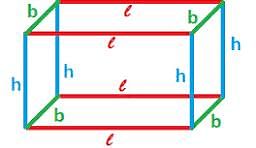Punjab Police Head Constable Paper 1 Mock Test - 2 - Punjab Police Constable MCQ
30 Questions MCQ Test - Punjab Police Head Constable Paper 1 Mock Test - 2
Which one amongst the following has nothing to do with India’s trade and commercial contacts with the rest of the world?
Identify environmental issues which are local in nature:
(i) Depletion of ozone layer
(ii) Lake pollution
(iii) Soil erosion
(iv) Climate change
(v) Water logging
(vi) Solid Waste Management
Select the answer from the options given below:
| 1 Crore+ students have signed up on EduRev. Have you? Download the App |
Which of the following does not include election procedure?
What is the government formed by an alliance of two or more political parties called?
When was the Punjab annexation with the British Rule?
Arrange the following famous Ancient Indian astronomers and mathematicians in the chronological order:
I. Aryabhatta
II. Varahamihira
III. Brahmagupta
IV. Bhaskara
Consider the following statements about the Buddhist councils:
- The Fourth Buddhist Council was held under the patronage of King Kanishka, where Buddhism split into Hinayana and Mahayana sects.
- The First Buddhist Council compiled the Buddha's teachings into the Sutta Pitaka and Vinaya Pitaka.
- The Third Buddhist Council was convened by Emperor Ashoka to purify the Buddhist movement from schismatic tendencies.
Which of the statements given above is/are correct?
If x is 75% of y, y is what percent of x?
An irrational number between 5/7 and 7/9 is :
The J&K Express from Delhi to Srinagar was delayed by snowfall for 16 minutes and made upfor the delay on a section of 80 km travelling with a speed 10 km per hour higher than its normal speed. Find the original speed of the J&K Express (according to the schedule)
Which of the following statement is true
Which of the following is equal to 3.14 x 106?
The formula for lateral surface area of cuboid is
The area of trapezium in the adjoining figure is

is equivalent to the following on the number line.
On simplifying (√5 + √7)2 we get
ਉਪਰੋਕਤ ਪੈਰੇ ਦਾ ਢੁਕਵਾਂ ਸਿਰਲੇਖ ਲਿਖੋ?
ਤੀਜੇ ਵਿਸ਼ਵ ਦੇ ਲੋਕਾਂ ਲਈ ਵੱਡੀ ਸਮੱਸਿਆ ਕੀ ਹੈ?




















